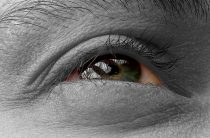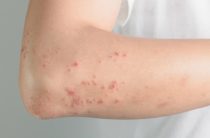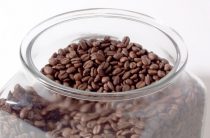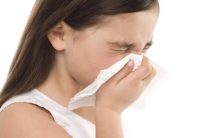When an increase in body temperature is noted in babies or adults, this is a signal that an inflammatory process is occurring in the body. It would seem that even a slight deviation from the norm is a sign of the struggle of the body of a sick person with a virus or infection.
Can the temperature rise with allergies? Doctors until now cannot come to a definite answer. Most of them argue that an ordinary allergic reaction should not contribute to this. Most often, fever is a symptom of a virus, a cold.
Over the past few years, in children, in adults, temperature with allergies has become a familiar phenomenon for us. This phenomenon is simply called atypical allergy. It is important to remember that if the temperature rises in parallel with the allergic reaction, you should contact the doctor as soon as possible so that he can prescribe a diagnosis, as a result of which he could exclude all other factors that contribute to its increase. When the doctor discovers the course of another disease in the patient, he is obliged to prescribe the appropriate therapy.
Why does fever occur with allergies?
It happens that an allergy occurs on animal hair, plant pollen.
Often it appears when a person suffers from allergic rhinitis, dermatitis. Such ailments can become risk factors, contribute to lacrimation, subfebrile condition. When, after taking an antihistamine, a decrease in temperature occurs, a person feels good, this indicates an atypical allergy.
The temperature can rise quickly if there is an allergy to medications. Most often, this disease in children, in adults occurs in parallel with:
- itching of the skin;
- intoxication;
- rashes on the skin.
Food
Allergy fever is often seen with food allergies.
Basically, in humans, in addition to symptoms such as intestinal colic, diarrhea, abdominal pain, vomiting, the temperature may also rise. This greatly worsens the patient's condition. Also, with food allergies, symptoms such as:
- headache;
- hives;
- skin itching;
- increased sweating followed by chills.
The last symptom should be all the more alert, you need to urgently call an ambulance.
Be aware that with this type of allergic reaction, the temperature can rise to 39-40 ° C, sometimes exceed the indicated figures.
Insects
Insect stings, such as wasps, mosquitoes or bees, are dangerous to humans, although many may not suspect this at all. If the patient has a general hypersensitivity and an allergy to honey, pronounced negative reactions may develop with a bee sting. In addition to the fact that there is a temperature with allergies in adults, in babies, low or too high blood pressure numbers, pain, swelling at the bite site are not excluded. It happens that the patient develops swelling of the respiratory tract. Such an ailment as Quincke's edema is not excluded.
Whey protein, vaccine
If an allergy is caused by a serum protein or it develops as a result of the introduction of a vaccine, the initial stage of the disease will be manifested by symptoms such as:
- slight enlargement of the lymph nodes;
- skin rashes;
- angioedema;
- an increase in body temperature up to 38 ° C.
The middle stage of the disease is characterized by pain, burning, itching, swelling around the injection site. If we talk about the severe stage, usually during its course the temperature rises and lasts for a long time. Other symptoms may also occur. It includes neuralgia, morbilliform rashes, joint pain.
Also, the development of inflammation in the synovial membrane, in which fluid accumulates in the joint cavity, is not excluded. This ailment has its own name - synovitis. The fourth stage of the disease is characterized by anaphylactic shock. It often leads to the death of the patient. Most often, an increase in temperature provokes an allergy to:
- insect bites;
- Food;
- medicines.
If contact with the allergen is excluded, it often goes down on its own and returns to normal. If this method does not help, the doctor needs to identify the exact cause and suggest what measures will be needed to prevent the development of the disease. When clear signs of an acute inflammatory process are visible, antihistamine drugs are ineffective. It is extremely important to eliminate the effect of the allergen, then prescribe the correct complex anti-allergic treatment.
Increased body temperature
Permanent subfebrile condition
If in babies older than two years, indicators of 37.1 ° С - 37.5 ° С are observed for a long time in parallel with any signs of allergy, an increase in lymph nodes is an alarming bell for parents. It is recommended to take the baby for a consultation with a phthisiatrician, an infectious disease specialist. Such a temperature is often a symptom of infectious diseases. A striking example of this is tuberculosis intoxication. These ailments can only be determined by a doctor. Such a temperature in adults, dry cough, weakness, increased sweating without other obvious symptoms can signal pulmonary tuberculosis.
Features of treatment
Doctors do not advise to bring down the temperature, which is less than 38.0 ° C. In another situation, it is worth urgently going to the hospital, because its increase may indicate viruses, infections that require emergency treatment. Antihistamines help fight allergies. Let's say Clearitin, Suprastin. Sometimes, to reduce body temperature, drugs based on paracetamol, analgin are used. Remember, any drug should be prescribed by a doctor, self-medication is prohibited and dangerous!
If you have an allergy while taking any medication, you should not bring down the temperature.
The patient is shown to drink plenty of fluids. It is best to drink purified or boiled water. Contact an allergist, he will tell you what to do in your situation. Ask questions to our doctor, share your problems!















